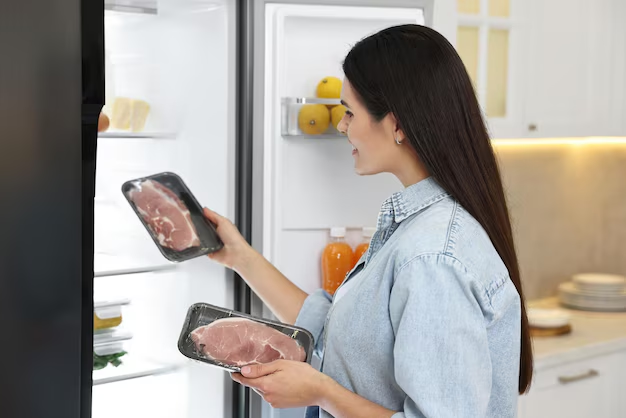Understanding the True Purpose of a Refrigerator: Essential Insights for Everyday Use
When you walk into a kitchen, one appliance stands out as the silent backbone of household functionality — the refrigerator. Its humming presence ensures that our groceries are fresh, our drinks are cold, and our leftovers are preserved. But have you ever truly pondered the fundamental question: What is the purpose of a refrigerator? Let’s dig deeper into this ubiquitous appliance, exploring its purpose from multiple angles to enhance your understanding and optimize its use.
Why Refrigerators Are Indispensable
At its core, the primary purpose of a refrigerator is to extend the shelf life of perishable foods. By maintaining a consistent temperature below that of the surrounding environment, refrigerators inhibit the growth of bacteria, molds, and other microorganisms that lead to food spoilage. This preservation function is not just about convenience; it’s central to our modern way of living, minimizing waste and promoting health and safety.
How Refrigerators Impact Daily Life
Food Preservation: By keeping your produce, dairy, meats, and other perishables cool, a refrigerator slows down spoilage, ensuring food stays fresh longer.
Energy Efficiency: Modern refrigerators combine technological advancements to maximize efficiency while minimizing environmental impact. Understanding how to use their features effectively contributes to energy conservation.
Cost Savings: By extending food lifespans, households save money on groceries. Less spoilage means fewer trips to the store and less money spent buying the same items repeatedly.
Health and Safety: Proper temperature control minimizes the risk of foodborne illnesses, safeguarding the well-being of the household.
Exploring the Mechanisms: How Do Refrigerators Work?
Understanding the mechanics behind a refrigerator can add depth to its usage and maintenance. Here’s a simplified breakdown of the process:
The Cooling Process
Refrigeration Cycle: Refrigerators use a cycle of evaporation and condensation involving a refrigerant to remove heat from inside the unit. This cycle is made up of four main components: the evaporator, compressor, condenser, and expansion valve.
Heat Removal: The evaporator absorbs heat from the interior of the fridge, turning the liquid refrigerant into gas. The compressor then pressurizes this gas, which moves to the condenser coils outside the fridge, releasing the heat into the air and converting the gas back to liquid.
Repeat Cycle: This process continuously repeats to maintain a consistent temperature within the fridge, optimizing food preservation.
Innovations in Cooling
With growing awareness about energy savings and environmental responsibility, manufacturers integrate advanced technologies in their refrigerator models:
Smart Refrigerators: Equipped with IoT capabilities, these appliances allow users to manage temperatures and monitor contents remotely via apps.
Inverter Technology: This allows compressors to operate at variable speeds instead of cycling on and off, ensuring less energy consumption and quieter operation.
Frost-Free Mechanisms: Modern models utilize automatic defrosting features that prevent ice build-up and maintain efficiency.
Integrating the Refrigerator's Purpose with Smart Buying Decisions
Choosing the right refrigerator involves understanding its purpose and aligning it with individual needs:
Capacity Needs: Evaluate based on household size and typical grocery habits — single-door units might suffice for smaller homes, while large families may require double doors or side-by-side models.
Energy Star Ratings: Look for refrigerators with high energy efficiency ratings. This not only lowers utility bills but also minimizes environmental footprints.
Layout and Design: Consider the kitchen layout and available space. The right choice balances aesthetics with practicality, incorporating features like adjustable shelving and door-in-door storage for convenience.
Feature Richness: Invest in features that truly add value — water dispensers, ice makers, smart technology, and customizable compartments can enhance usability.
Tips for Maximizing Refrigerator Efficiency and Longevity
A refrigerator is a long-term investment, and careful management can extend its life and functionality:
Regular Cleaning: Keep coils, compartments, and seals clean to enhance airflow and cooling efficiency.
Correct Temperature Setting: The ideal refrigerator temperature is about 37°F (3°C) to prevent spoilage without freezing fresh produce.
Proper Loading: Avoid overcrowding, which hinders air circulation and cooling efficiency. Organize contents to maintain consistent temperatures.
Minimize Door Opening: Frequently opening the refrigerator door lets warm air in, prompting the system to work harder. Be conscious of how often and how long you leave the door open.
Check Seals and Gaskets: Regularly inspect seals for any damage to ensure cool air remains inside. Tight seals prevent energy loss and maintain optimal performance.
Practical Takeaways and Consumer Tips 📝
Here’s a quick summary of the key points to consider when managing and optimizing your refrigerator usage:
- 🧊 Ideal Temperature: Keep refrigerator at 37°F (3°C) for maximum food preservation.
- 🛒 Shopping Strategy: Plan purchases based on storage capacity to avoid overcrowding.
- ⚙️ Maintenance Checks: Regularly clean seals and coils for better energy efficiency.
- 🌍 Eco-Awareness: Choose models with high energy ratings for environmental sustainability.
- 🔒 Minimize Door Openings: Efficient usage is more sustainable and maintains interior conditions.
Broader Implications of Refrigeration Technology
Beyond the household, refrigeration technology plays a crucial role in global sectors. It supports food transport and storage, medical supplies and vaccine preservation, and chemical industries. Refrigeration technology continues to evolve, embracing sustainability and efficiency to meet new challenges and demands.
The refrigerator, a staple in our daily lives, isn’t just a cooling box hidden in the corner of the kitchen. It’s a vital contribution to food safety, economic savings, and environmental responsibility. By understanding and utilizing its purpose effectively, we ensure that this essential appliance continues to support and safeguard our lifestyle efficiently.
